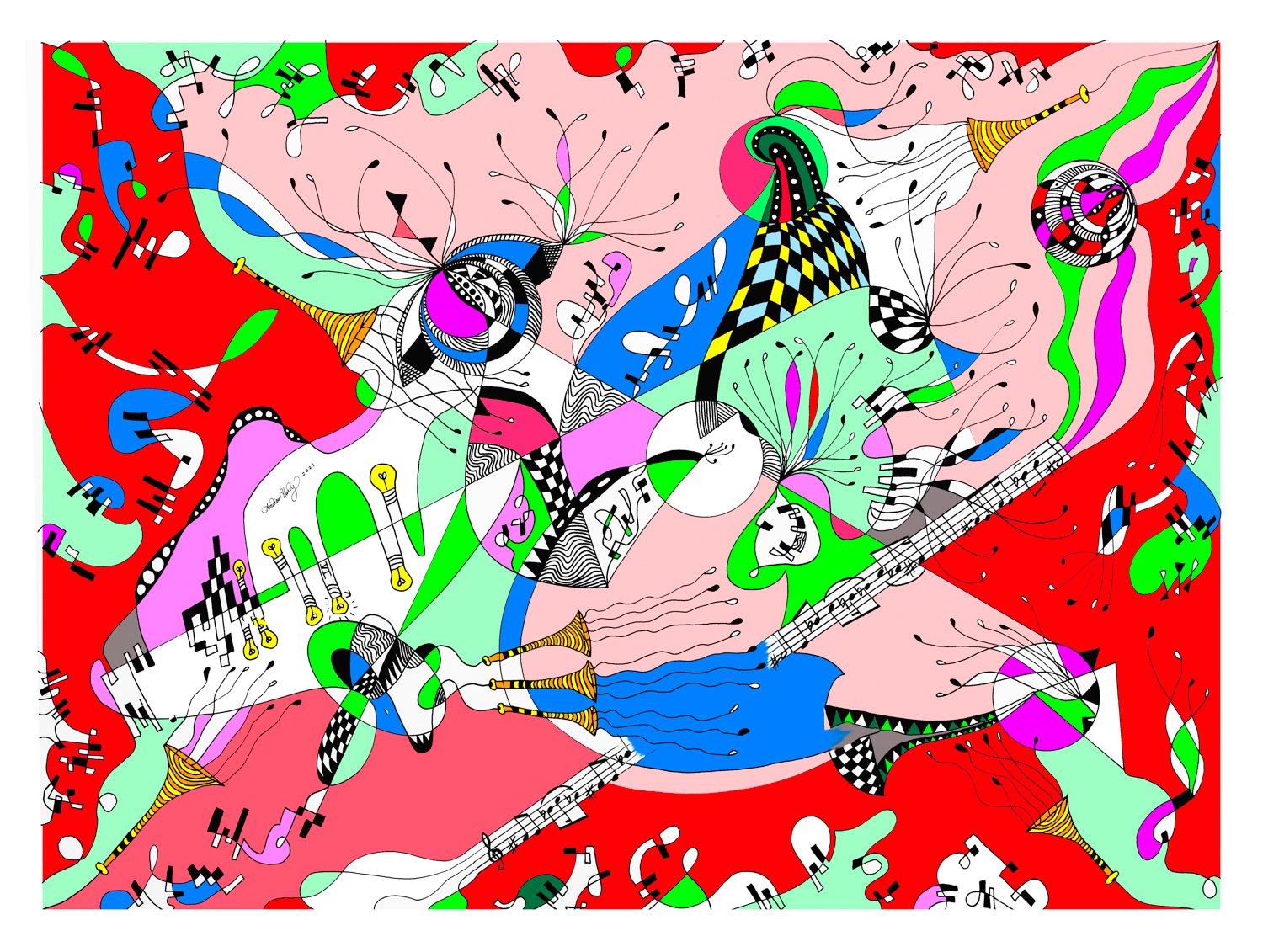“Danse de la fureur, pour les sept trompettes”
“Danse de la fureur, pour les sept trompettes (II)" (Color version). The Original Artwork is a Pen & Ink drawing I completed on 1 July 2021.
The above Artwork; "Danse de la fureur, pour les sept trompettes II" (translated into English as “Dance of Fury, for the Seven Trumpets”) was inspired by the sixth movement (out of eight movements) from the great composer Olivier Messiaen's formidable "Quatuor pour le fin du temps" (“Quartet for the End of Time”) scored for clarinet, violin, cello & piano. This is a chamber music work that I performed (as violinist) on several memorable occasions.
Messiaen's work was originally premiered on January 15, 1941, at the Stalag VIIIA prisoner-of-war camp, in Görlitz, Germany (as a side note, I once had the great pleasure of visiting Görlitz, and there performed the majestic Violin Concerto in D Major, Op. 77 by Johannes Brahms). Messiaen had been confined at this Stalag after his capture in May 1940. Bleak times! The work’s unusual instrumentation was determined by the instruments and performers Messiaen had at hand. Imagine… a Masterpiece of such depths and proportions written in a concentration camp…. How horrific, and yet how inspiring; like the beautiful Lotus that grows and blooms out of the filth!
Messiaen spurned the use of regular rhythms and meters so often associated with Western Classical Music, and instead often composed unpredictable patterns and ever-changing meters frequently based on prime numbers, especially 5, 7, 11, and 13. The clarinet and violin phrases tend to be reminiscent of bird songs, and motifs recur throughout; from one movement to the next. The four instruments rarely play simultaneously, except in this tricky movement, where the players must play these complicated rhythms in unison, in all its fury, driving rhythms, and frequent syncopations!
Messiaen dedicated his "Quatuor pour le fin du temps" in “ homage to the Angel of the Apocalypse, who raises his hand towards Heaven saying ‘There shall be no more time.’ ” The titles of the individual movements were derived from the biblical Revelation to John.
The musical quote seen in my Artwork shown here is from this sixth movement, and you can perhaps count the seven trumpets. I think the style of this abstract Artwork reminds me somewhat of Kandinsky’s work (not that I am comparing myself in any way to that supremely great Artist!).

